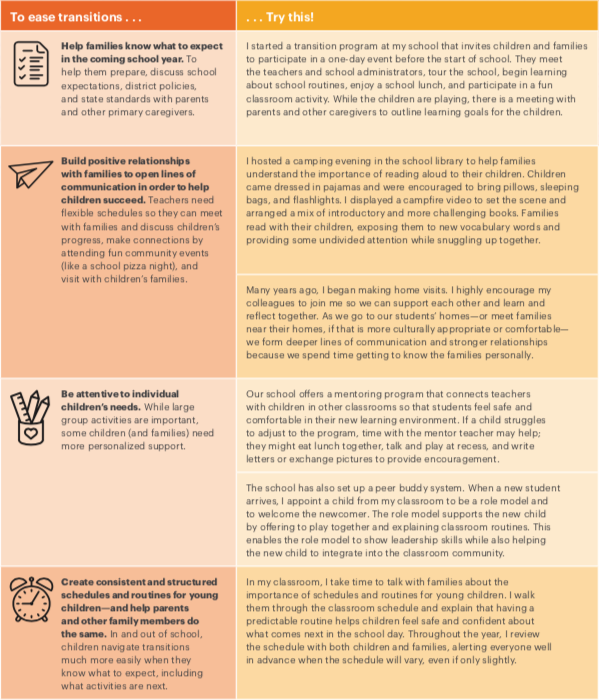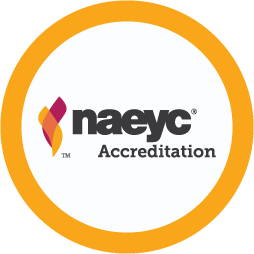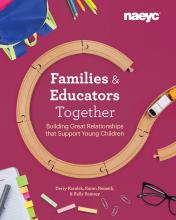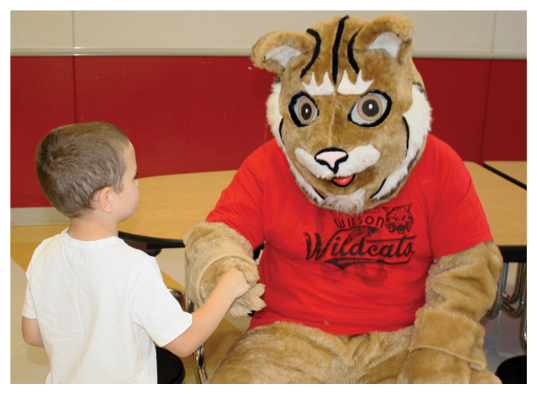Easing Transitions for Children and Families

You are here
Growing up in a large Hispanic family, I had many supportive experiences that helped me become flexible, observant, and resilient—attributes that prepared me to be successful in school. Today, as an early childhood educator, two positive, related influences stand out when I think back on my childhood. One is how my family helped my siblings and me through transitions. Small and large, day-to-day and month-to-month, transitions were frequent throughout my early years—as I imagine they are for most children in large families.
The other major influence was my father. He often said, “Education is something nobody can take from you.” He didn’t have any formal education and didn’t have a stable upbringing, but he knew it was critical for a parent to set the foundation for learning. When my siblings and I started school, he made sure we had a structured learning routine at home. Many of our transitions were unavoidable, but having our home learning routine remain consistent provided stability.
My father’s encouragement and guidance prepared me to become a sensitive, supportive teacher in a school that serves diverse populations.

Strategies for welcoming children and families
As a public school teacher, I am aware that my young students face many transitions throughout their lives, and I think about how those transitions might impact their behavior and readiness to learn. I try to support children and families throughout the small and large transitions they experience. In the table below, I share some of the ideas and strategies I have found most useful.

Closing thoughts
While my colleagues and I already do a lot to help children and families with transitions, we’re always looking for additional ways to be supportive. My next step is to put together a collaborative committee of teacher and administrative representatives from educational programs in the community. By collaborating with early learning centers, elementary schools, afterschool programs, and family child care providers, we can better understand—and assist with—many of the transitions young children face.
This article supports the following NAEYC Early Learning Program Accreditation standards and topic areas

STANDARDS 1: RELATIONSHIPS; 3: TEACHING
1A: Building Positive Relationships Between Teachers and Families
3D: Using Time, Grouping, and Routines to Achieve Learning Goals
Photographs: 1, courtesy of the author
 For more on family engagement, check out Families and Educators Together: Building Great Relationships that Support Young Children. Packed with strategies, resources, and examples from early childhood programs, this book illustrates numerous ways to engage families in your early childhood community so that together, families + educators = thriving children.
For more on family engagement, check out Families and Educators Together: Building Great Relationships that Support Young Children. Packed with strategies, resources, and examples from early childhood programs, this book illustrates numerous ways to engage families in your early childhood community so that together, families + educators = thriving children.
Francisca Jensen is a nationally board-certified kindergarten teacher at Wilson Elementary School, in Norman, Okahoma.
